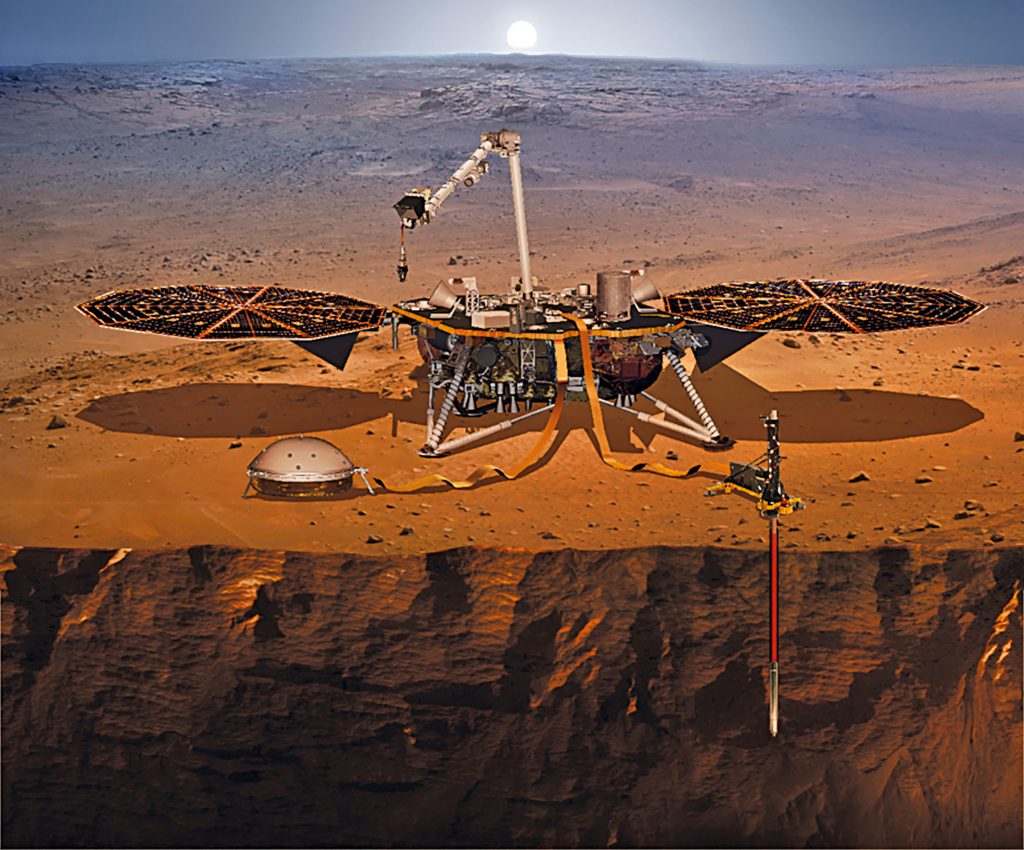Interior Exploration using Seismic Investigations, Geodesy and Heat Transport
Just six months after its launch in May 2018, the InSight lander will touch down on the surface of Mars. The mission is part of NASA’s successful Discovery programme and for the frst time will intensively examine the interior of our planetary neighbour – its crust, mantle and core. While Earth has experienced many changes as a result of plate tectonics, Mars has undergone less of a radical change since its formation four and a half billion years ago. Scientists are hoping that InSight will provide answers to questions regarding the earliest developments of Mars and enable them to draw conclusions about the evolutionary history of the Red Planet and Earth. The landing site in Elysium Planum is located in the northern lowlands, approximately 1500 kilometres south of the Elysium Mons volcano. After landing, the Seismic Experiment for Interior Structures (SEIS) will start to record the seismic waves from ‘Marsquakes’ and providing data to understand the planet’s history. The Rotation and Interior Structure Experiment (RISE) will register minimal changes in the planet’s axis alignment and also allow conclusions to be drawn about its interior structure.
DLR is sending a heat flow probe to the Red Planet, namely the Heat Flow and Physical Properties Package (HP3). A so-called ‘mole’ will penetrate to a depth of fve metres using an internal hammering mechanism that will drive heat sensors into the ground. These will supply readings fully automatically and from various depths during an entire Martian year – the equivalent of two Earth years. An infrared radiometer will also measure the temperature profle on the surface. The combination of both data sets makes it possible to deduce the heat flow in the planet’s interior. The instrument was primarily developed at the DLR Institute of Planetary Research and tested at the DLR Institute of Space Systems. After InSight has landed, DLR’s Microgravity User Support Center in Cologne will take over HP3 operations.
German Aerospace Center (DLR)
Ulrich Köhler · E-Mail: ulrich.koehler@dlr.de · DLR.de/en
